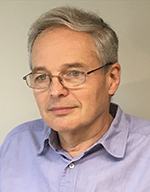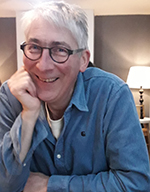
The art of maths and the maths of art
Mathematics is a creative pursuit so it's not surprising that there are communalities between maths and art in all its forms. In this episode we explore the intersection between maths and art with physicist Andrzej Herczyński and mathematician Paul Glendinning.

Andrzej Herczyński
Andrzej and Paul were two of the organisers of the workshop Space, scale and scaling in art, which recently took place at the Isaac Newton Institute for Mathematical Sciences in Cambridge. We find out about the rich dialogue that can ensue between artists and mathematicians, how maths and physics can help us understand the power of art and how we perceive it, and provide insights into how a particular piece of art was made.
The Space, scale and scaling in art workshop was part of a larger research programme funded by the National Science Foundation on the intersection of science and art, which grew out of discussions at a 2017 research programme at the INI, called Growth form and self-organisation.
You can see Agnes Martin's painting Morning, which is mentioned in this episode, here (though the digital version does not do it justice). To see Jackson Pollock's works, which are also discussed in this episode, go to the Jackson Pollock website. The image above has been generated by AI.

Paul Glendinning
To find out more about some of the topics mentioned in this episode, see the following articles:
- Fractal expressionism looks at fractal structures in works by the abstract expressionist Jackson Pollock.
- The Artist's fractal fingerprint explores Pollock's paintings further.
- Sine language looks at a song by our musician friend Oli Freke which explores the idea of sine waves, and how they relate to other concepts such as the Western tuning system known as equal temperament and even to ancient Greek cosmological ideas.
- Fractal music has composer Dmitry Kormann explaining how he brings fractal-like patterns to the very structure of his music, with beautiful results.
- Restoring profanity explores how the heat equation can help restore damaged art works.
- Where to stand to look at sculptures uses some simple geometry to find the perfect vantage point from which to take in a sculpture (or painting).
To see all our content on maths and art see here, and for everything on maths and music see here.
This content was produced as part of our collaboration with the Isaac Newton Institute for Mathematical Sciences (INI) – you can find all the content from our collaboration here. The INI is an international research centre and our neighbour here on the University of Cambridge's maths campus. It attracts leading mathematical scientists from all over the world, and is open to all. Visit www.newton.ac.uk to find out more.
